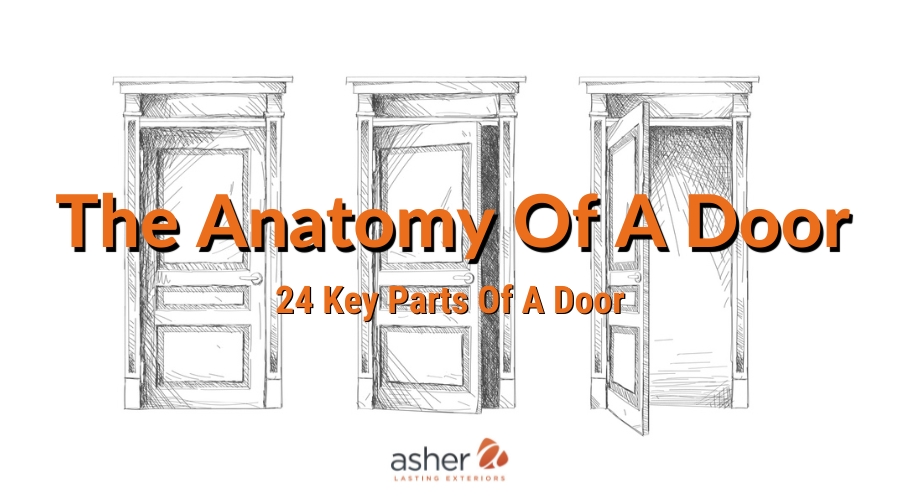Your door is more complex than it seems. Whether you’re upgrading your home or tackling a repair, understanding the parts of a door is a must.
In this guide, we’ll break down each component, from the door frame to the handle, and help you decide when to replace your door. The right choice of door will continue to protect and beautify your home for years to come.
Asher Lasting Exteriors has a wide selection of entry, sliding, and storm doors to choose from for your Wisconsin home.
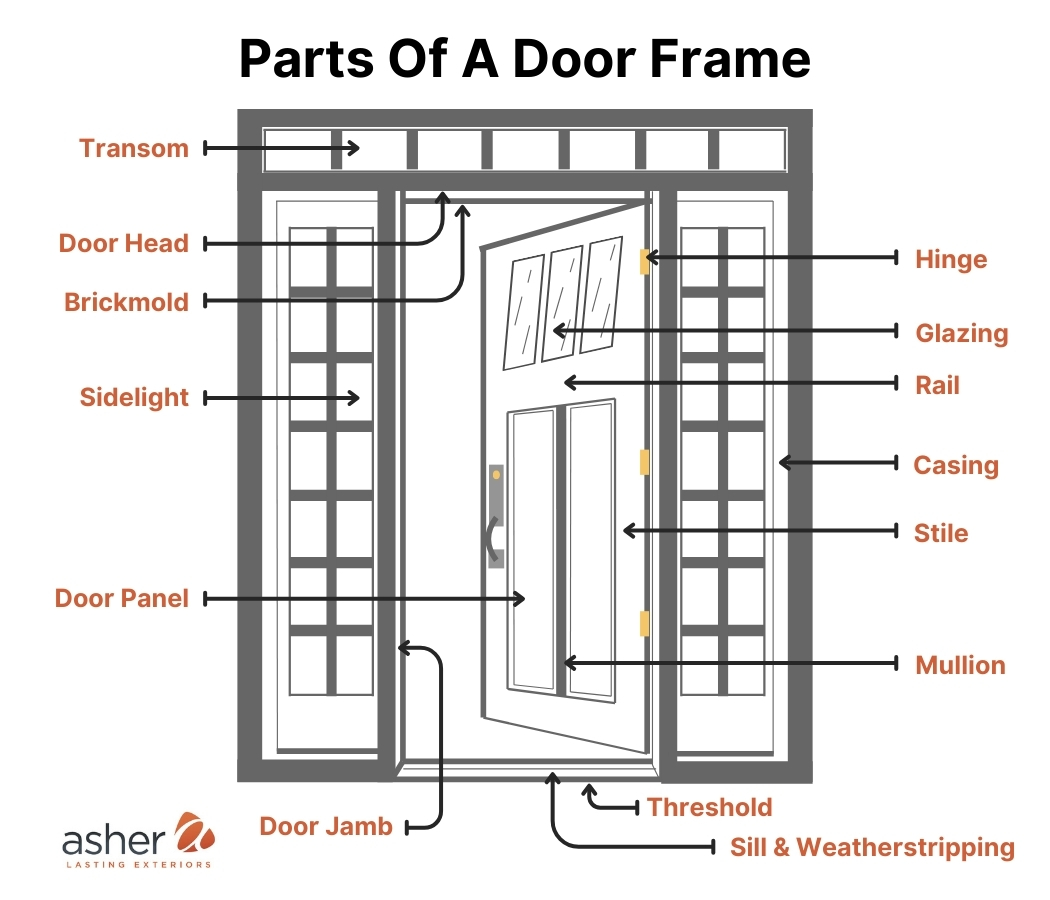
Parts Of A Door Frame
The door frame is the structure that surrounds and supports your door. As you can see above in the door parts diagram, it includes several key components: the head, jambs, and sill. The head is the horizontal piece at the top, while the jambs are the vertical sides. The door sill is at the bottom. Together, these sections of a door create a sturdy frame. Other parts of the door frame include:
Door Frame
The door frame is the outer structure that supports the door. It is one of the most important parts of a doorway that includes the head, jambs, and sill. Together, they create a stable frame for the door to fit into.
Door Jamb
What is a door jamb? It is the vertical components of the door frame located on either side of the door. Side jambs hold the hinges that allow the door to swing open and close. The jambs also provide a surface for the door to latch into when closed.
Door Head
The door head is the horizontal piece at the top of the door frame. It spans the width of the door and connects the two vertical jambs. With this setup, the door head maintains the door’s alignment and stability.
Threshold
The threshold is the strip located at the bottom of a doorway where the interior and exterior floors meet. It often includes additional features like weather stripping to seal out drafts, moisture, and debris. Additionally, it provides a smooth surface for the door to close against.
Sill
The sill is the horizontal piece at the bottom of the door frame, forming the base upon which the door rests when closed. It’s an integral part of the door’s structural frame and supports the weight of the door while helping anchor the frame to the floor.
Considering buying a new door? Learn what details to look for when deciding on your ideal front door.
Brickmold
Brickmold, sometimes spelled brickmould, is the exterior trim surrounding the door frame. It acts as a transition between the door and the exterior wall and is typically located on the outside of the door. By helping seal the gap between the frame and the wall, the brickmold protects against outside elements.
Casing
The casing is the interior trim that surrounds the door frame and covers the gap between the frame and the wall. Located on the inside of the door, it hides any uneven edges and provides a finished look to the doorway.
Stile
Stiles are the vertical sections of the door itself, located on either side of the door panel. They provide structural support and form the edges of the door. This is where the door hinges are attached on one side and the latch or lock mechanism on the other.
Rail
Rails are the horizontal sections of the door that run across the top, middle, and bottom. They connect the stiles on either side and form a sturdy framework for the door panel.
Door Panel
The door panel is the large, flat surface that makes up the main body of the door. It’s framed by the stiles and rails, which provide structural support. The panel can be solid or feature decorative elements like glass inserts.
Your entry door isn’t the only thing that can affect your curb appeal. Discover 25 different ways to transform your home’s curb appeal.
Mullion
A mullion is a vertical or horizontal divider between sections of the door. This is often used to separate glass panels or other decorative elements within the door. It provides structural support and stability.
Glazing
Glazing refers to the glass components within a door, such as windows or decorative glass inserts. These elements can be single, double, or even triple-paned. Located within the door panel, glazing allows natural light to flow.
Transom
A transom is a horizontal window located above the door. The purpose is often to let additional light into a room or entryway. It can be a fixed pane of glass or an operable window.
Sidelight
Sidelights are vertical windows positioned on either side of a door. They allow natural light to enter the entryway while maintaining privacy. When positioned correctly, sidelights can make the doorway feel more inviting.
Hinge
Hinges are the metal hardware that connect the door to the frame. These allow it to swing open and close. They are located along the door’s vertical edge on the side attached to the jamb.
Fiberglass vs. steel doors: Which is the best entry door? Learn about the benefits that each door has.
Weatherstripping
Weatherstripping is the material that lines the edges of the door. It creates a seal between the door and the frame to prevent drafts or moisture. Typically, you place it along the sides and top of the door as well as on the threshold.
Door Sweep
A door sweep is a strip of material attached to the bottom of the doorway. Designed to seal the gap between the door and the threshold, it prevents drafts or dust from entering.
Ready to replace your entry or storm door? Consider these factors when deciding on front door components.
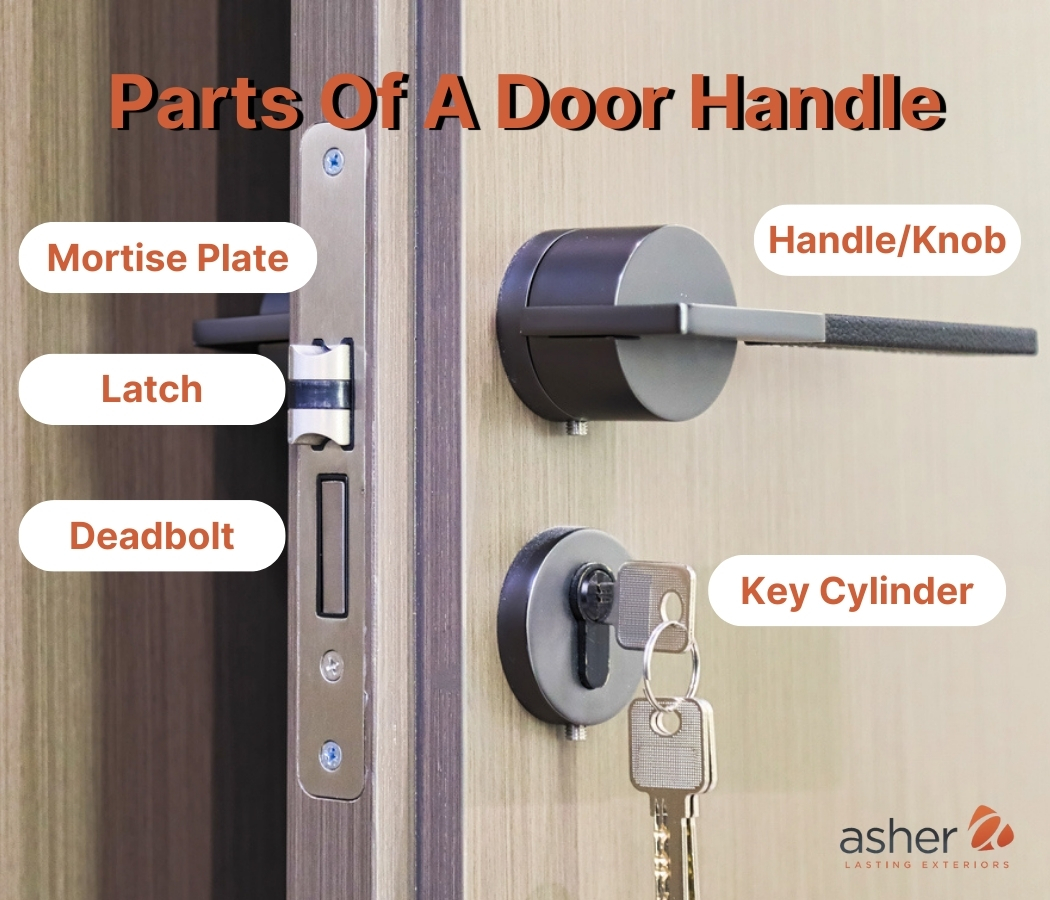
Parts Of A Door Handle
A door handle is more than just the lever or knob you use to open a door. It’s one of the most important parts of an exterior door. It’s constructed with the handle or knob, which you grasp to open the door, and the latch. This keeps the door closed by fitting into the door frame. Other parts include:
Handle
The handle is the part of the door you grip to open or close it. Located on the outside and inside of the door, the handle is connected to the latch mechanism via a spindle. When you turn or press the handle, it retracts the latch and opens the door.
Knob
A knob is a handle that you twist to open or close the door. While often round, knobs can come in various shapes like oval or egg-shaped designs. Located on both sides of the door, the knob connects to the latch mechanism through a spindle.
Key Cylinder
The key cylinder is the component of the door lock where you insert your key. Located within the handle or knob, it interacts with the lock mechanism to secure or unlock the door. When the key is inserted and turned, the cylinder rotates and engages the lock.
Consider these parts of an exterior door to avoid the challenges of your doors in cold weather climates.
Latch
The latch is the mechanism that keeps the door securely closed when it’s not locked. It’s located inside the door and extends from the edge of the door into the door frame. When you turn the handle, the latch retracts.
Deadbolt
The deadbolt is a powerful locking mechanism that provides additional security beyond the standard latch. Typically installed above the door handle, the deadbolt extends directly into the door frame when locked. This makes it much harder to force the door open.
Mortise Plate
The mortise plate is a metal plate installed on the door frame where the latch or deadbolt extends into the frame. It secures the door and helps prevent wear and tear on the frame.
Housing
The housing is the casing that surrounds and protects the internal components of the door handle or lock mechanism. Located within the door, it holds parts like the latch, spindle, and springs in place.
If you’re thinking of a door replacement, take time to consider how to pick a front door color.
Learn More About Our Door Replacement Services
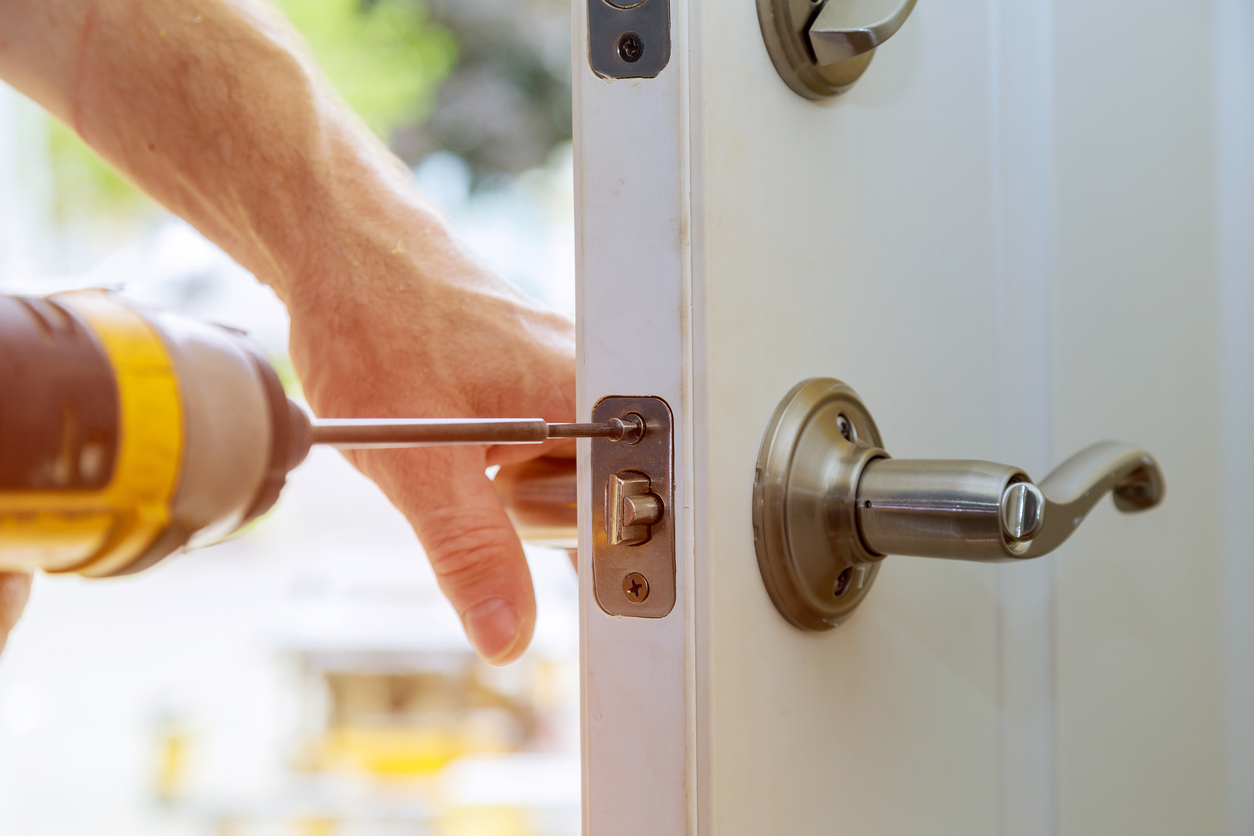
When To Fix A Door Vs. Replace It
The lifespan of a door varies. The International Association of Certified Home Inspectors estimates a door can last anywhere from 20 to over 100 years, depending on the type and use.
Given that reality, deciding to fix or replace a door can be tricky. Start by examining the extent of the damage, cost, and overall condition of the door anatomy. Small cracks, loose hinges, or cosmetic damage can often be resolved with repairs. This is usually sufficient if the door is still structurally sound.
However, if the door has severe damage – such as warping, rot, or large cracks – a door replacement done by professionals is the better choice. This is also advisable if it has poor energy efficiency or outdated security.
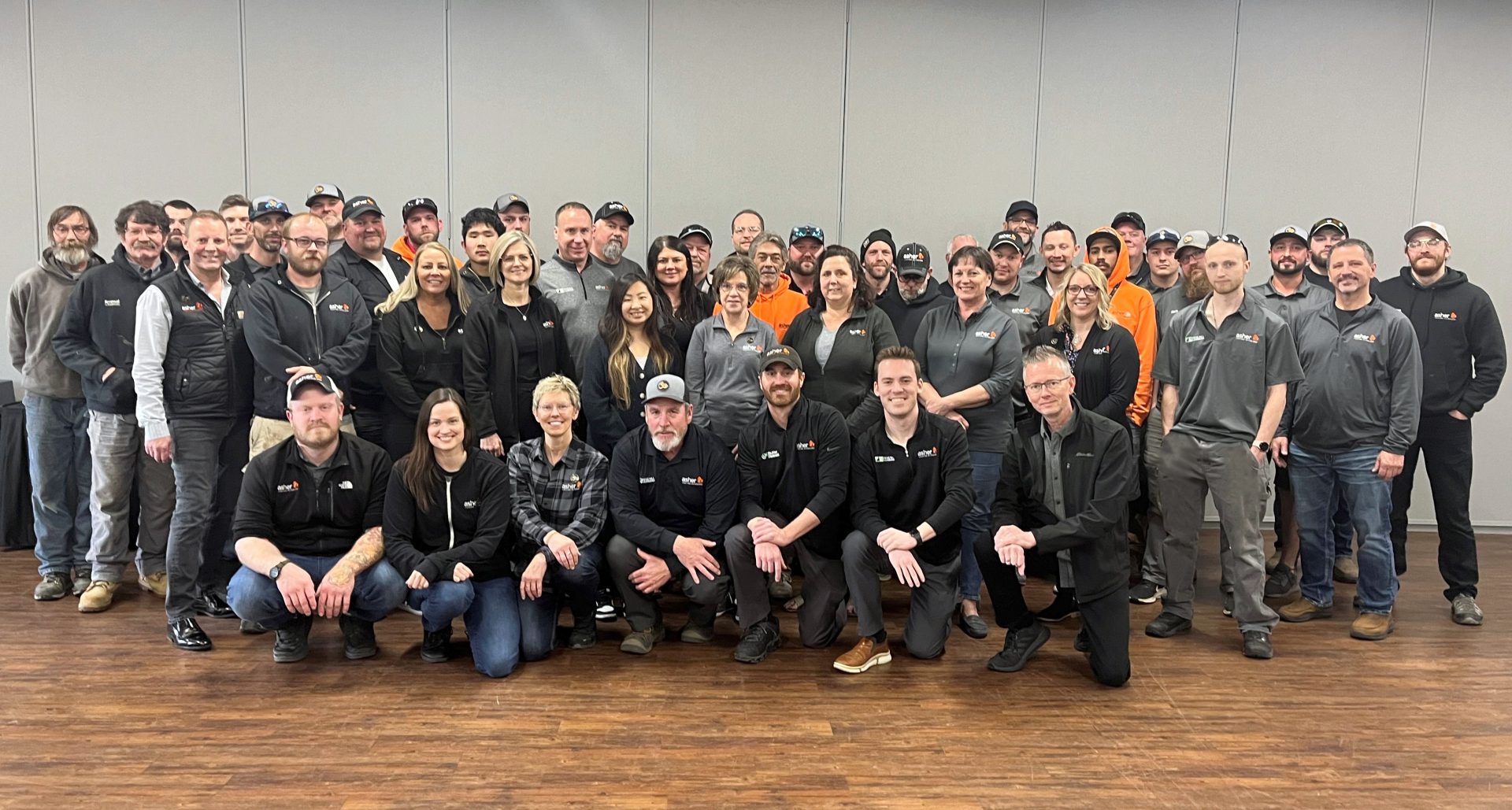
Asher Lasting Exteriors: Western Wisconsin’s Door Replacement Experts
Your door is more than just an entryway; it’s the cornerstone of your home. At Asher Lasting Exteriors, we bring over 50 years of experience to the table. We know exterior doors must function well while improving the beauty and safety of your home.
It’s our priority that you know your options for expertly replacing and installing your new door. You deserve nothing but the best. Contact our team today!
